What Causes Rising Damp?
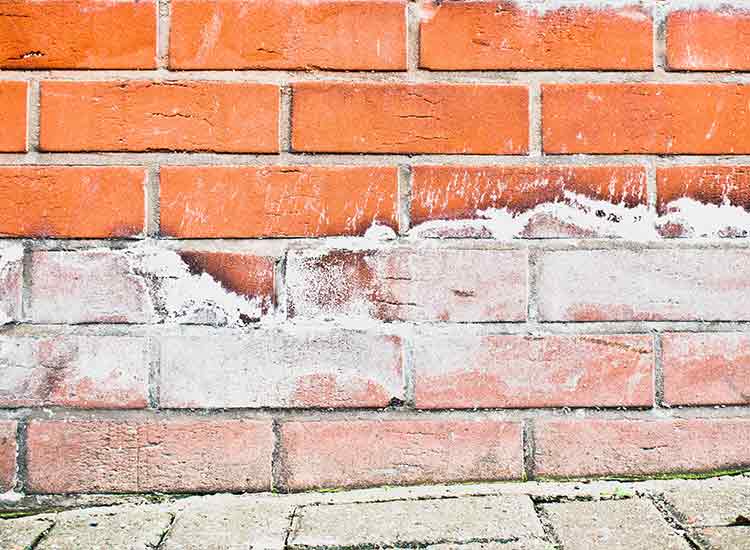
One of the most common types of damp problems which is faced by property owners is rising damp. If you are looking to protect your property from rising damp issues then this page will help provide you with crucial tips which can help you take the relevant precautions. You will gain a much deeper understanding of what causes rising damp and what are the best actions to treat and prevent damp.
Bricks and mortar are naturally porous in nature which provides water with the perfect platform to manoeuvre itself upwards through the narrow air pockets. Liquid possesses the dangerous capability to defy gravity and travel upwards. As a result, bricks and mortar absorb this moisture from the ground and this is what causes rising damp. Your wall is essentially soaking the groundwater upwards however it is not just natural absorption which results in the damp rising there is also an electrical attraction to make the water rise and this is known as capillarity.
What Causes Rising Damp in Walls?
Rising damp is the name given to the movement of moisture upwards through building materials by capillary action. If the moisture penetrates vulnerable materials it can become a serious issue especially if this is within occupied parts of the building. In newer properties, a damp proofing course will stop this action and ensure this does not become an issue for your property. However, if the damp proof course is old and damaged, or has been installed incorrectly then this will allow the damp to rise through the brickwork or stonework and into the internal surfaces of your property.
A damp-proof course is a waterproof layer in your wall, which ideally is around 150 mm (six inches) above the outside ground on your external walls and close to the floor or below the floor in internal brick walls. It is a waterproof layer that sits between the bricks or stonework walls across the property. This layer is designed to stop the damp from rising up the masonry walls within your property.
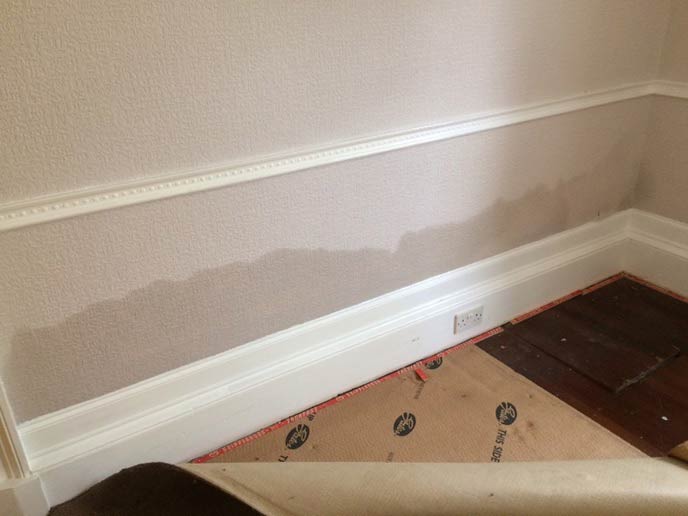
Your property’s damp proof course can be functioning well, but your property may still be suffering from rising damp. If this is the case it is likely that your property’s damp proof course has been breached. This means that there may be a material which is attached to your walls which is allowing water to travel around the DPC and keep travelling upwards. This may also be caused by issues such as an area of ground at your external wall being higher than your DPC, or there may be an outside structure such as steps which are bridging the DPC. This will present the water with an opportunity to travel upwards through this and affect the wall above the DPC.
Your DPC can be bridged in a variety of different ways. Internal plaster could be directly connected to a solid floor at the bottom of your internal wall. Cavity walls can have debris inside of them, which may be from leftover building materials or defective damp cavity wall insulation. If the debris or damp cavity insulation is higher up than the DPC this can easily act as another bridge which allows moisture to travel from the ground through the wall as rising damp.
However, it is important to remember that your damp problem may not necessarily be caused by rising damp. If the damp patches in your property reach higher than one metre above the bottom of your wall and are patchy then it is likely that you are actually suffering from penetrating damp.
Capillary Action Explained
Capillary action is the phenomena tha causes rising damp. It means moisture which is able to rise up through capillaries (pores in the material) defying gravity due to an electrical attraction. A simple example of capillary action is within medical practices. When small blood samples are being taken a very fine tube will be held against a small cut and capillary action is what draws the blood out and into the tube. In masonry, capillary action, if not stopped, can have a seriously negative impact on your property by causing rising damp.
How Does Rising Damp Occur?
Rising damp is caused by moisture ascending through capillaries which are found in masonry. Capillaries are thin, lengthy tubes (pores) which are very small within the material. Within masonry, these tubes can often differ considerably in their thickness. The tighter the pore structure the more resilient the material is to capillarity and therefore to rising damp. Common bricks and mortar have a larger pore structure compared to engineering brick which has a tighter pore structure and therefore the moisture will rise higher in the common brick.
What Happens If Rising Damp Is Left Untreated
The walls of your property can become seriously impacted if damp conditions are not swiftly rectified. Excessive damp can affect the internal wall fabric and unprotected timber of a property, which in the majority of older properties can form as much as seventy five percent of the structure which means keeping your timber dry is important to protect a crucial element of the integrity of your building.
Damp timbers can potentially result in dry or wet rot growth. These conditions break down the cells within the wood and cause the timber to feel soft and spongy. Often the wood will lose its strength while becoming darker and can easily crumble and potentially disintegrate due to the fungal attack.
However, dry rot is potentially the worst fungal attack that can affect your damp timber and have a serious impact on your property. Dry rot is a fungus which can spread across timber and masonry. It can potentially attack any part of your house and can even grow through the wall to your neighbour’s property. This fungus can grow extremely quickly and urgent treatment is required when a dry rot attack has been identified.
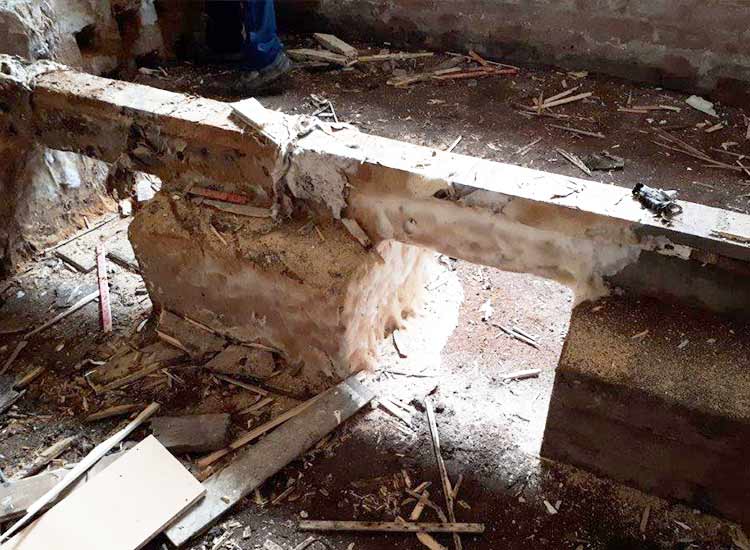
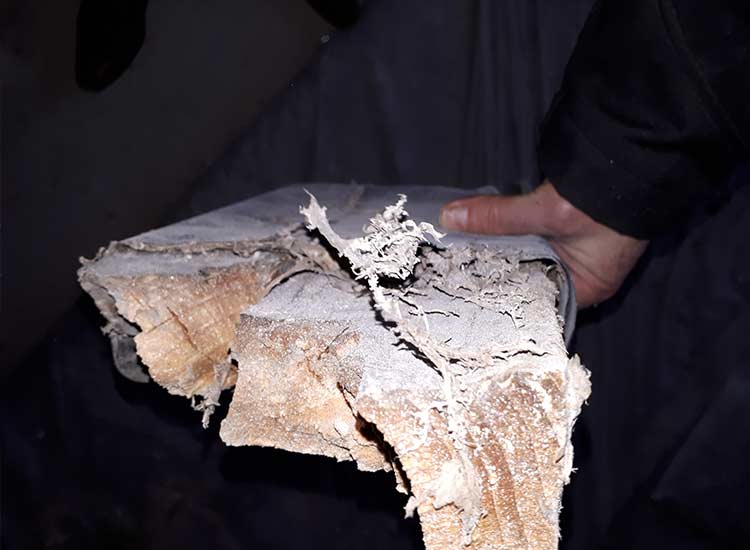
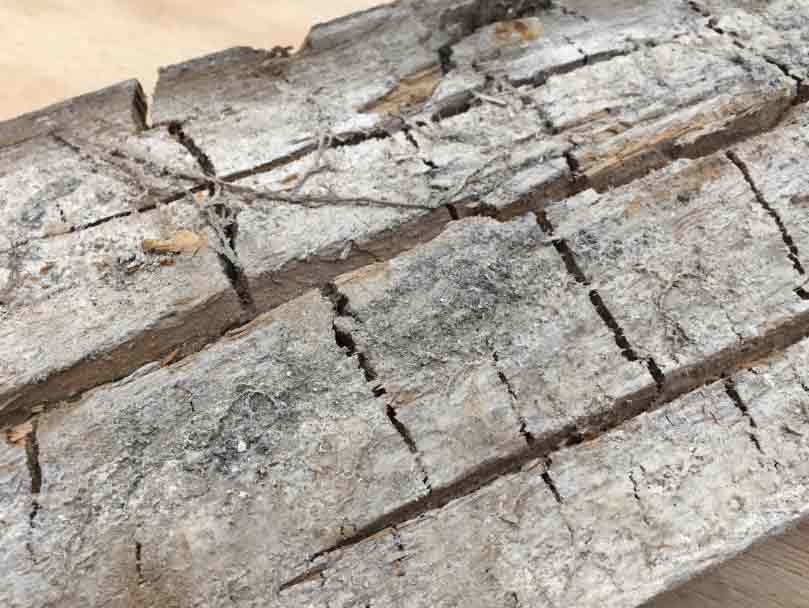
Furthermore, failure to rectify high moisture levels and dampness in your property can attract wood destroying insect attack called woodworm into your property. Woodworm is the most common name for the larvae stage of wood boring beetles. These insects will eat the timbers of your property which can potentially cause a progressive weakening of the structural stability of your property. Specialists can specify the appropriate remedial action to remove the infestation from your property.
Treating Rising Damp
In order to treat rising damp appropriately, it is vital to accurately identify what causes rising damp before specifying the appropriate remedial treatment. One of the worst mistakes which property owners make with regards to rising damp issues is trying to carry out a quick fix to solve their damp problem. Attempting to paint over visible damp will not solve the damp problem and will just cost you more money for a cosmetic repair instead of dealing with the source of the damp issue.
If you know that your damp proof course has been bridged, you can try and adjust or remove whatever is causing the bridge. Removing or isolating the bridge to keep clear of the damp proof course will ensure that rising damp will not affect the wall above an effective damp proof course.
If you are unable to remove the object which is causing the breach in your DPC or your DPC is not operating correctly, you may require to install an entirely new damp proof course or waterproof membrane to your walls. A specialist surveyor can inspect the damp problem and issue an appropriate specification to resolve the damp issue to your property. This may be the first Damp Proof Course your property has had or a chemical damp proof course may be required to be installed to repair the existing defective DPC.
Conclusion
Damp walls are commonly misdiagnosed. To the untrained eye, it can be very difficult to pinpoint the type of damp your property is suffering from. It is crucial that the exact source of the dampness is thoroughly investigated as an inaccurate diagnosis can result in additional damage and unnecessary costs being incurred. Therefore, if there is any doubt in the type of damp problem it is highly recommended to ask one of our specialists who will ensure your damp problem is dealt with effectively.
A damp survey from one of Richardson & Starling’s damp specialists can prove critical with regards to ensuring that your property is able to tackle your rising damp problem in a timely and efficient manner. Damp Proof Course remedial work carried out by our specialists come with up to a thirty-year guarantee to give you peace of mind that your rising damp problem has been solved. Uncertified specialists can often misdiagnose the source of your damp issue which can result in your maintenance budget being wasted unnecessarily. All property owners should aim to keep their property dry and to diagnose and treat any damp issues they find in a common sense and cost-effective way. Since 1935 this is precisely what Richardson & Starling provide.Not sure what is causing damp in your home? Contact your local branch for advice or a property survey to regain your peace of mind.
